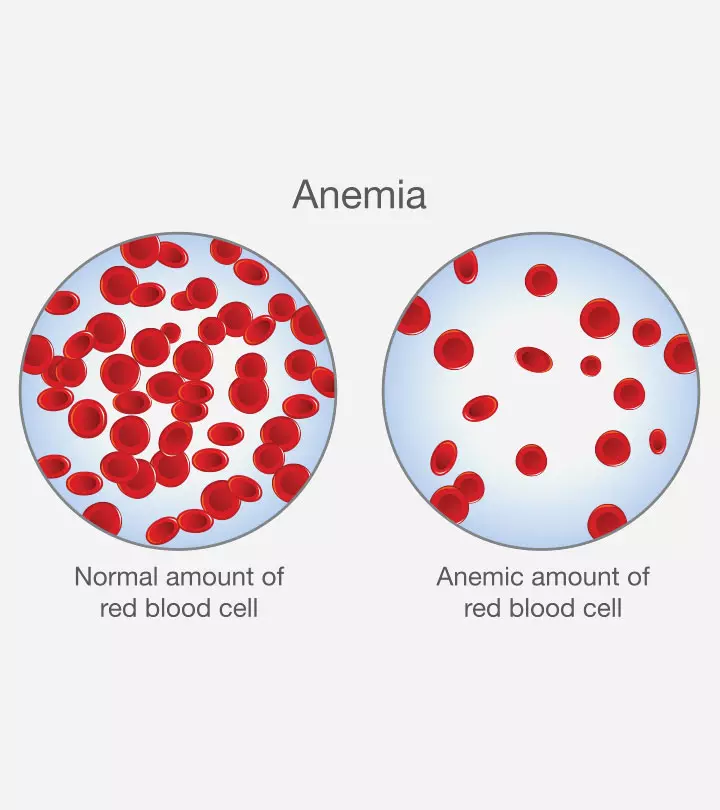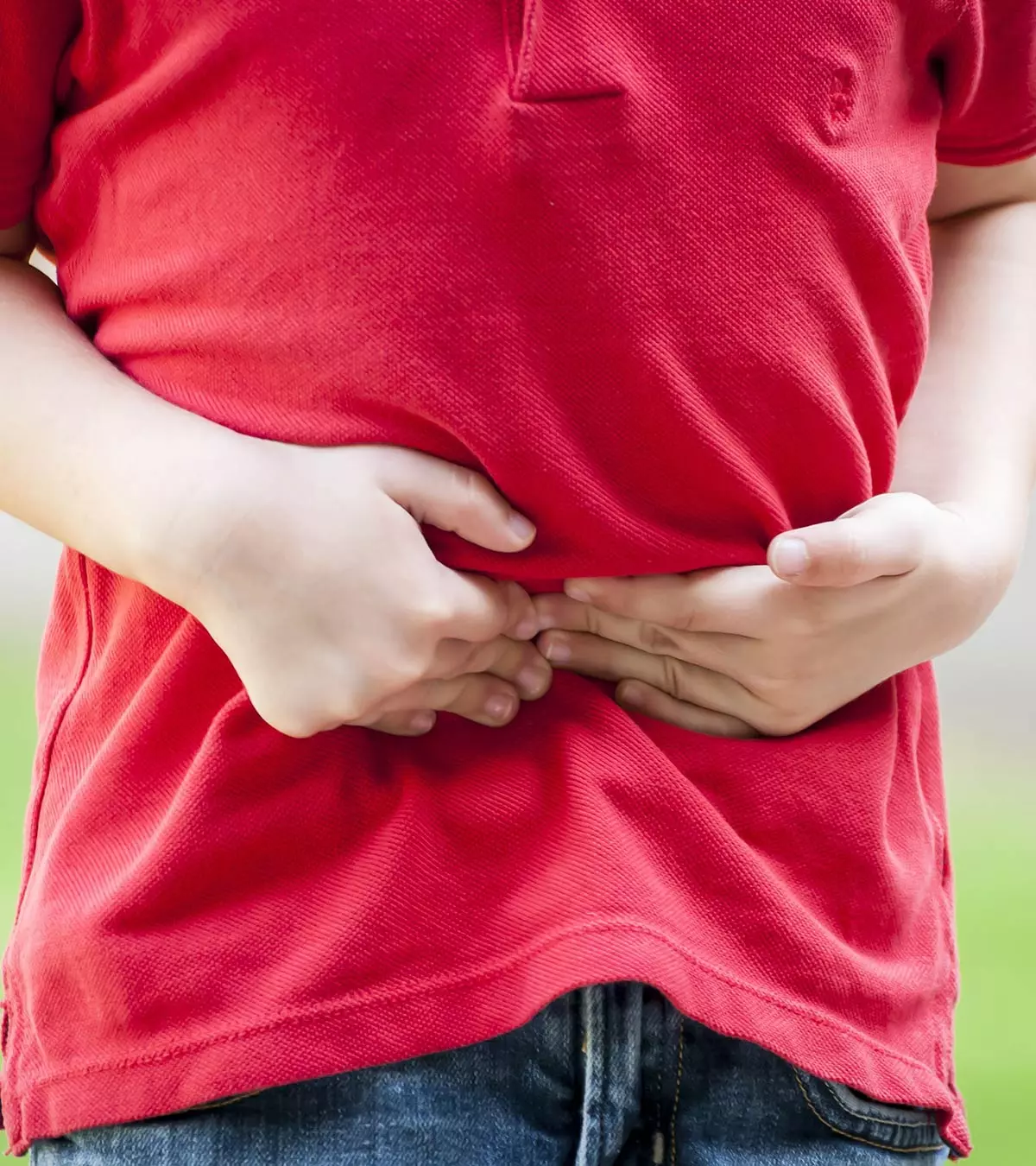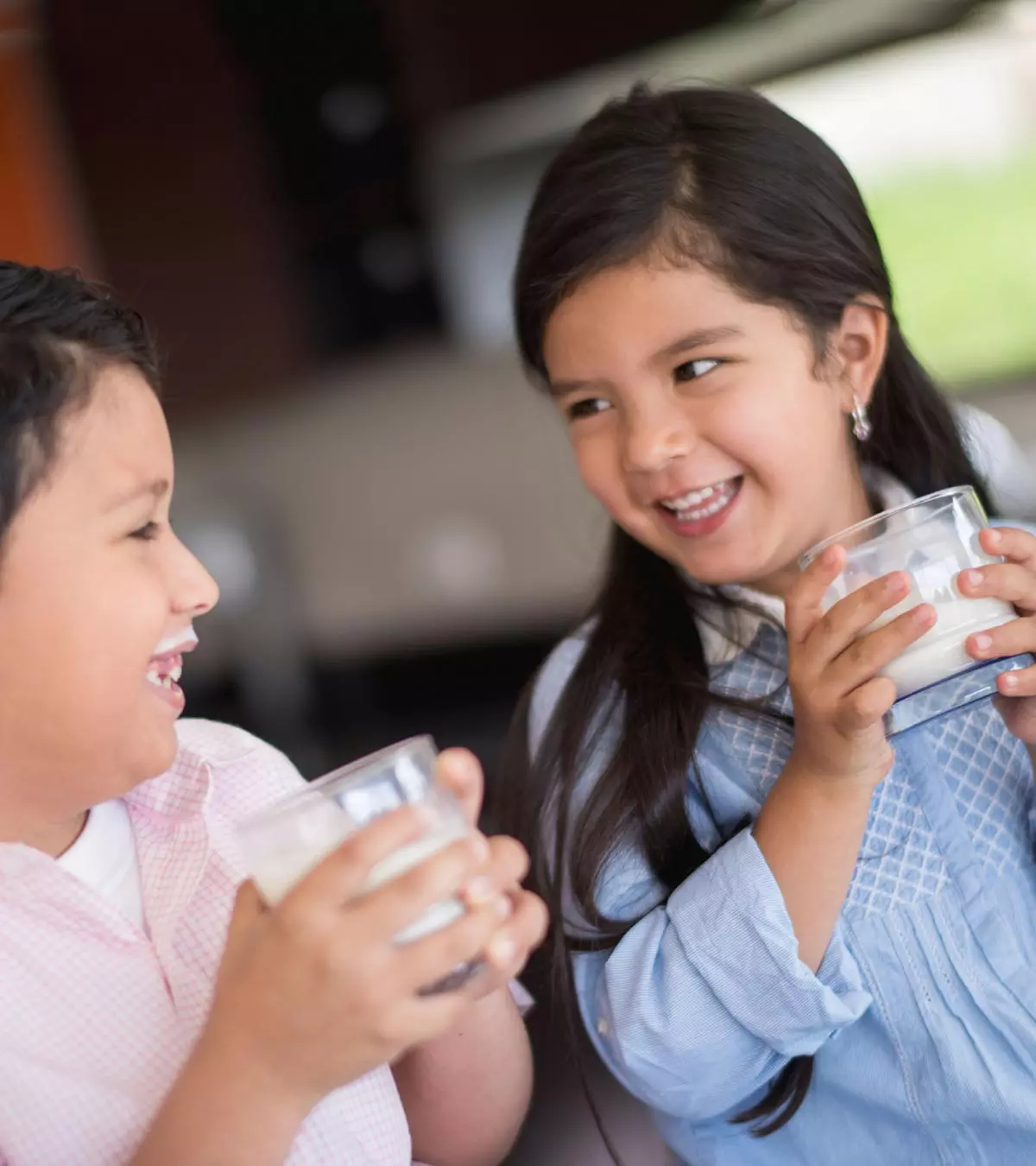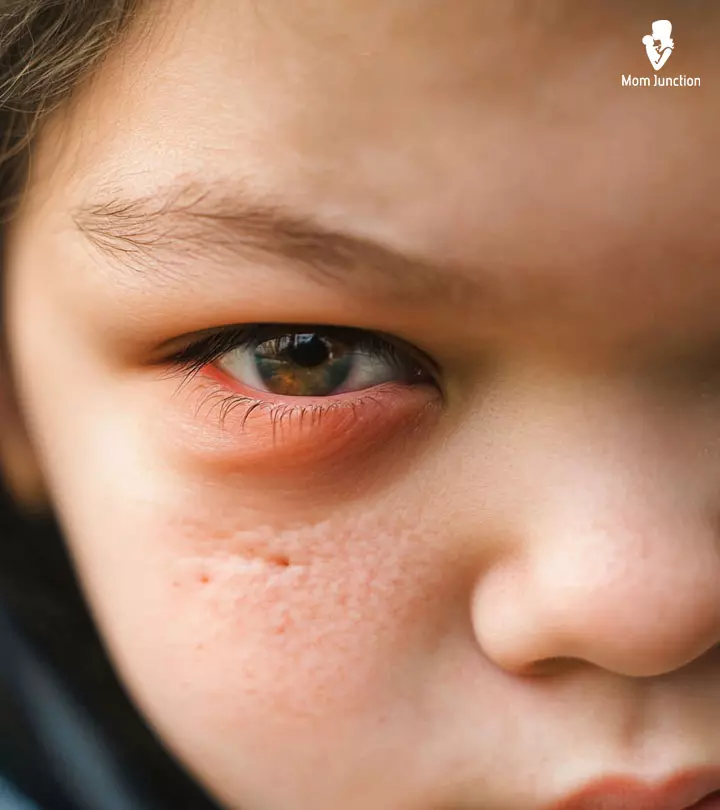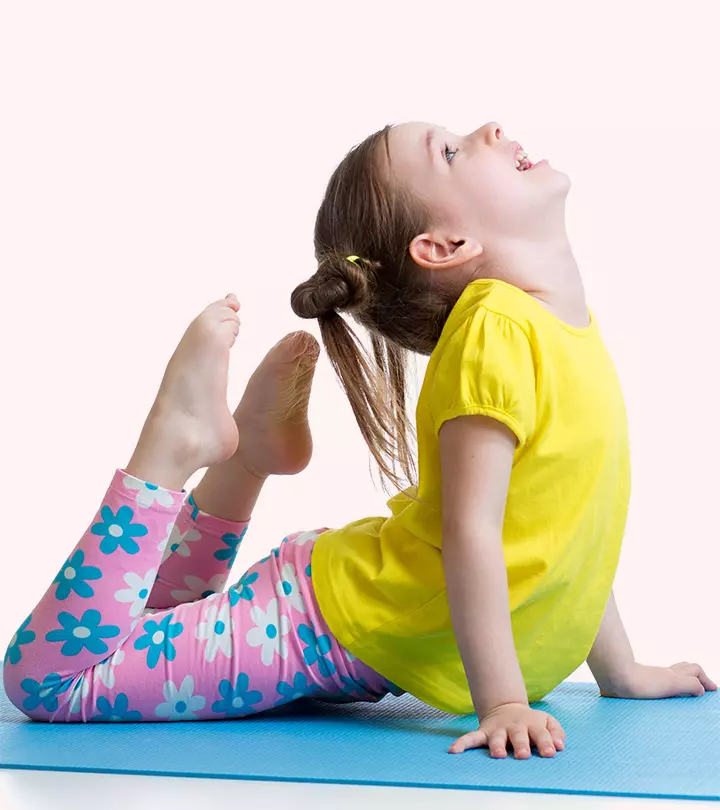
Image: ShutterStock
An active lifestyle has several physical and psychological benefits for children. As per the American Academy of Pediatrics, organized sports like gymnastics may improve their social skills. The Centers for Disease Control and Prevention (CDC) released a report indicating that in 2020, over half of children aged 6 to 17 years (54.1%) participated in sports activities in the previous 12 months. As strenuous sports might raise concerns for some parents, here’s more on gymnastics for kids. Keep reading as we have listed the pros and cons of this physical activity for children, the right age to begin, and a few activities for their overall development.
Key Pointers
- Gymnastics helps children build motor skills, confidence, resilience, strength, speed, coordination, body control, flexibility, balance, dedication, discipline, and social skills.
- It improves a child’s cognitive function and protects against healh conditions while laying the athletic foundation for their development.
- Adventure trail, talent routine, Sister Phoebe, volley punch, serpentine maze, freeze frame, and island tag are some gymnastics-inspired games for kids.
- Unprepared or underage children performing gymnastics may face injuries, physiological defects, shifting of goals, and unhealthy habits in the long run.
- Suitability for a child depends on factors such as their readiness, age, motor development, attention span, personality, activity level, and trainer accreditation.
What Is Gymnastics For Kids?
Gymnastics is a comprehensive lifestyle and exercise program, incorporating speed, strength, flexibility, coordination, power, and balance. It is a sport that requires immense dedication and skill. While it is advisable to begin early, most kids can start during their teens and continue through their college years.
Suitability And Early Skills
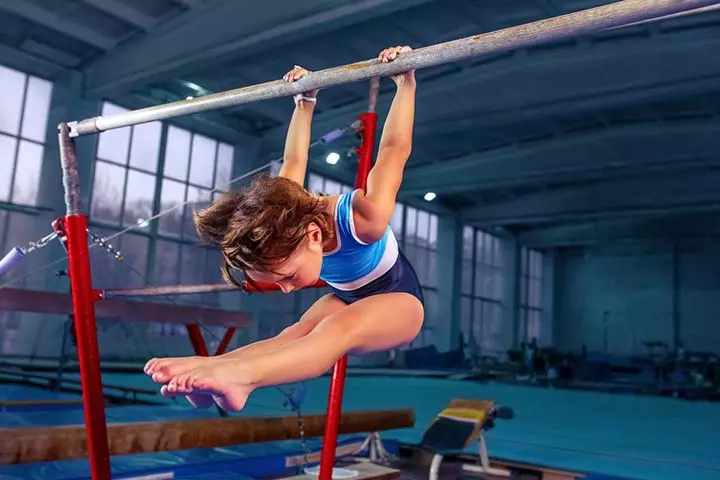
Image: IStock
Gymnastics is one of the excellent extra-curricular activities for kids. It is rather sufficient for developing a kid’s balance, basic motor skills, and coordination.
The beginner gymnastic classes focus on learning basic body positions like a straddle, tuck, rolling and gymnastics terminology. Once children learn these skills, they’ll progress to good balance skills like hopping, jumping and walking on the balance beam.
As the kid becomes older and advances with gymnastics, he will require toning his body. And, he would need to discuss this matter with a qualified gymnastics instructor.
At What Age Should Kids Start Gymnastics?
There are no hard and fast rules of the age at which kids should start gymnastics. Even gyms don’t follow any specific rules and regulations. Some gyms provide classes for kids as young as 18 months while some give lessons to a 12-year-old. Here, we list some guidelines to help you decide at what age you need to enroll your kids in gymnastic classes.
1. American Academy Of Pediatrics
According to the American Academy of Pediatrics, children under six years old are not ready for organized sports like football or basketball.
The organization suggests that children aged between 2 to 5 should practice motor skills by playing sports like running, tumbling, throwing and catching. The instructions should be short and crisp, and the playtime should be included in the formal classes. So young children aged between 2 to 5 can begin gymnastic classes as long as the courses aim at their motor skills development. The academy has also mentioned that gymnastics is great for kids aged 6 to 9, so waiting would be a good option.
2. USA Gymnastics
USA Gymnastics, the father organization for the US Olympic team and all the certified gyms across the country, recommends that kids less than three years old can take up classes with a parent or caregiver. It has a specific teacher certification for its trainers for young kids, called the Kinder Accreditation for Teachers. Their gymnastic classes use activities that are appropriate for each age group.
3. Depends On Kids
Deciding when the kid is ready for gymnastics depends on the child himself. If your little one has started doing the rolls across the backyard, then he might be more prepared for the gymnastic classes than your five-year-old who refuses to try moving sideways even on the run. But if the same kids cannot sit still during story time, then he may not be able to handle the formal classes. Some gymnastic classes also give free trial classes so that you can see whether your kid is ready to do gymnastics or not.
Benefits Of Gymnastics
Whether children are involved in recreational gymnastics or with a competition squad, the sport can provide several physiological and cognitive benefits to children. Gymnastics equips kids with skills that help them handle emotional and physical changes in life. Moreover, it helps develop their body awareness and spatial awareness. Here are a few ways in which gymnastics can benefit your child.
1. Health benefits
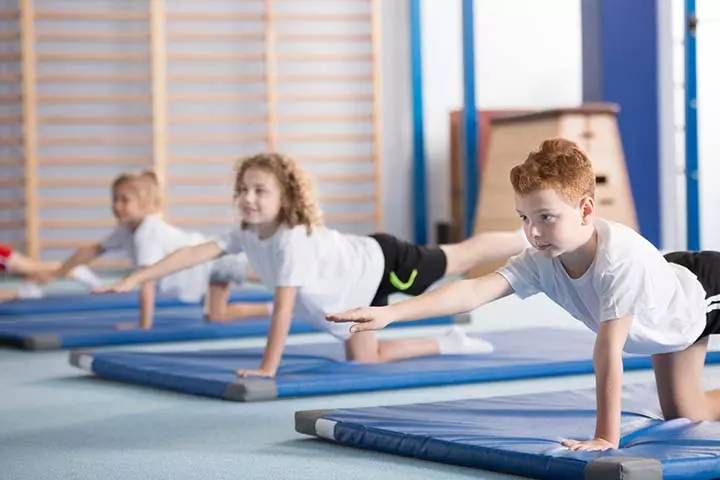
Image: IStock
Extended participation in gymnastics can provide your kids with some health benefits, regardless of the age or ability. A regular involvement in gymnastics will avoid the possibility of developing heart problems like heart diseases and diabetes. It even prevents age-related functional decline like osteoporosis and bone loss.
A study conducted by the President’s Council on Physical Fitness and Sports found that one in three kids in the United States were overweight. Gymnastics helps burn fat, thereby contributing to weight management. So taking part in gymnastics will keep kids fit and healthy. Participating in gymnastics also helps your child sleep better.
2. Lays the athletic foundation
The USA Gymnastics has pointed out that gymnastics lays the foundation for any sport that kids choose to pursue when they get older. Gymnastics for children provides a mental toughness that is needed to excel in skills from beginner to elite levels. There’s a great deal of physical strength involved in it as well. Plus, gymnastics help develop strong leaders and good and competitive players. Just as sports like basketball and football, a gymnast learns how his unique talent would help the team. In short, gymnastics lays the foundation for all athletic endeavors.
3. Social benefits
Attending gymnastic classes and engaging in gymnastic routines will develop healthy habits in children and provide them with an opportunity to communicate with people of their age, work as a team, and engage with adults, thereby honing their social skills. It will even help them learn how to follow directions, remain quiet when required, follow directions, listen, and respect others. Kids even motivate each other while learning gymnastics. Gymnastics also requires kids to build a healthy relationship with their coaches and teammates.
4. Learn discipline
Gymnastics provides an ideal environment to learn fair play and sportsmanship. Learning to master these basic skills requires an enormous amount of commitment, dedication, hard work and concentration on the part of gymnasts. Children who are regular at gymnastic classes work extremely hard to learn the skills that may otherwise take years for them to achieve. It’s also been proven that kids who do gymnastics have a better sense of judgment and fairness of character.
5. Build strength
Gymnastics is renowned for producing the best athletes in the world. It is one of the sports for kids that requires doing body weight exercises to build core strength and upper and lower body. So taking part in gymnastics from a young age will give power, muscle strength and endurance to kids. Even the International Gymnastics School asserts that gymnastics makes the kids stronger through regular coaching, giving better posture, toned muscles, and improved balance.
6. Overcoming fears
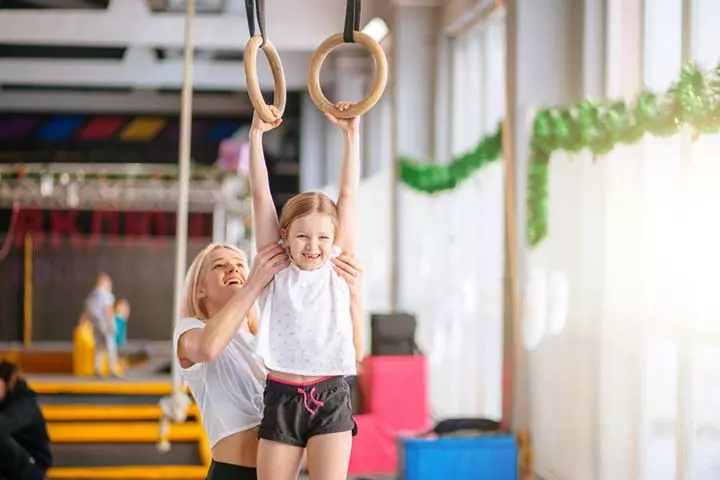
Image: Shutterstock
A few things in gymnastics are very scary, and a lot of this has to do with the fear of trying something that we have never done before. Gymnastics encourages the little ones to share their concerns with the coaches. The trainers and coaches then give exercises that can work through their fears. They lay the path and assist the young gymnasts in every step in achieving those challenges. This approach helps the kid overcome things that they perceive as impossible, be it things in the gym or life.
7. Cognitive benefits
Gymnastics does not just give physical gains but is beneficial for improving mental focus and concentration too. Gymnastics requires children to visualize the skills they have learned and act out. It gives the kids the chance to think for themselves, to solve the problems safely and to stimulate their imagination. During gymnastics, the nerve cells multiply, promoting and strengthening brain function and connections. Children will carry the coordination skills learned during gymnastics to their classrooms as well. Researchers even suggest that there is a strong correlation between physically fit kids and academic excellence.
8. Improves coordination and control of body
Flexibility is a significant factor in gymnastics and to achieve it, children need to perform various moves. Increased flexibility is also effective in reducing injury and preventing kids from forcing a limb to a dangerous range of motion. By learning gymnastic movements and including them in a routine, your little gymnast can attain greater control of the body.
Gymnastics also improves coordination in children. Unlike non-gymnasts, gymnasts do not give a startling response to the sudden imbalances. By applying this condition in normal life, kids will learn to avoid risky situations by identifying them quickly. Gymnastic for kids can even correct the body alignment when standing, jumping, walking, etc.
9. Fun
We have saved the most persuasive and convincing benefit of gymnastics for the last. Gymnastics is great fun! Learning how to tumble, swing, flip, jump and even coming close to flight can be anything but boring. A regular participation in gymnastics also releases endorphins, the happiness chemicals, which will improve the mood in children and will keep them joyful.
“A friend from high school recommended a gym (Gym-Kinetics) to me last year, and I did a lot of research before signing her up for a gymnastics class. To my delight, she loves it. It seems to be a perfect fit for her. She bounces around like a bunny the whole time, full of energy. So far, I am happy with how the class flows, and I can already see Kayla learning new things. Kayla loves watching the older kids do flips. She watches them in awe. Only time will tell if Kayla has any skill as far as this sport goes, but for now, it’s all for fun (i).”
 Quick fact
Quick factCons Of Gymnastics
The admirable qualities of gymnastics have come under the scrutiny of critics who think that it can cause physical delays in the long run, or can do more harm than good to a kid’s well being. So is gymnastics right for the child? Or does it pose a threat to your kid’s health? Let’s find out the cons or drawbacks of the gymnastics below!
1. Injuries
Gymnastics has the highest injury rate out of all the kids’ sports, including cheerleading, basketball, and soccer. A 2008 issue of Pediatrics found that one in five children or more than 26000 U.S children suffers from gymnastic-related injuries every year.
 Quick tip
Quick tip2. Emotional effects
Putting high expectations to develop the advanced motor skills even before they are ready could lead to psychological defects in children. As reported by the American Academy of Pediatrics, a child may experience frustration or feelings of failure if the demands exceed his/her physical or cognitive development. He will not understand what is being taught in the class, even if the coach teaches all the skills and rules.
3. Shift of goals
A healthy childhood is impossible if a high-level sport becomes a way of life. According to pediatricians, kids participating in high-level sport experience a shift from child-oriented goals to adult oriented goals. Yes, not every young gymnast reaches the highest level, but many of them attempt to achieve it through rigorous training. Even the International Gymnastics Federation found that most of these athletes were pushed to perform at a high level by their coaches and parents. These kinds of parents and teachers often lack the environment and even knowledge to support this level of training, eventually leading to unhealthy habits.These are the amazing fun facts about gymnastics for kids.
 Did you know?
Did you know?Gymnastic Games And Activities For Kids
While learning gymnastics, practicing and learning skills can be incorporated into games to keep the kids entertained. The games and activities should be creative, fun, yet challenging enough to improve the fitness components like endurance, flexibility, balance and muscle strength in tykes.
1. Adventure trail
Adventure Trail is a perfect warm-up game for the little gymnasts as it combines several exercises and works on different muscle groups.
You Will Need:
- Wedge mat station, handstand station and so on
How To:
- For this game, you have to set up several stations around the gym. For instance, set up a tumble over the wedge mat station, followed by the handstand and bridge station.
- Divide the gymnasts into two teams. The gymnasts have to complete all the stations in order, with each team starting at a different station.
- To make the game more challenging, tell the kids to spend one or two minutes at the station before moving to the next station. This can be one of the best gymnastics games for kids.
2. Simon Says with a twist
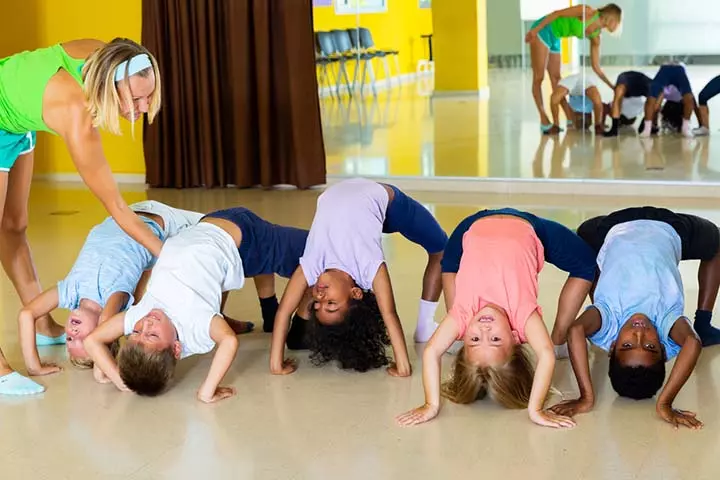
Image: IStock
This version of Simon Says challenges children to follow the directions and work on their skills.
You Will Need:
- Nothing
How To:
- Tell your kids to line up and in front of their tutor. If the trainer says, “Do a cartwheel:” the students have to do a cartwheel.
- But the catch is that instead of tricking the participants and commanding without saying, “Simon says,” the kid who fails to perform the skill or the one who does it last will lose the round.
- The game will be easier if another coach can see which children should go to each round.
3. A talent routine
Talent routine will promote creativity and teamwork in the gymnasts.
You Will Need:
- Nothing
How To:
- Divide the gymnasts into teams of two to three students. Give each team ten minutes to create their talent routine. Gymnasts can use their skills learned during the day or previous lesson, as long as a range of exercises has to be performed.
- Each team will perform their part one at a time. At the end of the performance, the teams have to write down which team they liked the best, but without voting for themselves.
- The team that gets the most number of votes will win. It can be one of the best and interesting gymnastics for little kids to enjoy.
4. Pretend, but with a purpose
Mixing creativity with exercise is the best way to keep the gymnasts occupied.
You Will Need:
- Nothing
How To:
- Direct the little gymnasts to pretend and perform as different animals. For example, if a kid is pretending to be a kangaroo, he will jump around the room like a kangaroo. This activity will exercise the power and strength output.
- Or if the gymnast wants to be a crab, he has to crawl around on his hands and feet, with the belly facing towards the ceiling. Pretending to be a crab will help build the muscles in the legs, arms, and core.
5. Memory add-on
According to the GOB Gymnastics, the memory add-on game will work on your kid’s memory and physical skill.
You Will Need:
- Nothing
How To:
- Have the gymnasts stand in a line and select on gymnast to perform a skill or exercise. The other gymnasts have to repeat the exercise.
- Now the next gymnast in line has to show the same skill, but will add on one of his own skill or exercises.
- The kids have to continue adding the skill or activity until a gymnast forgets the order of tasks.
- If it happens, shuffle the line and start again.
6. Sister Phoebe
You Will Need:
- A chair
- Equipment to create obstacles
How To:
- Create an obstacle course for kids using gymnastic equipment.
- Select a gymnast to play the dame. The dame has to sit in the middle while the other players have to join hands to form a ring and move around her chanting slowly, “How happy was Old Sister Phoebe when she sat under the oak tree?”
- At the end of every chant, there will be a pause, during which the player standing behind the sitter will withdraw and hide. The player has to hide to the other side of the obstacle, but without making any noise. If ‘Phoebe’ catches the player while escaping, then the captured player will be the next dame. This needs to be repeated until the last player has withdrawn.
- Sister Phoebe, who has been sleeping (not actually) the entire time because of the soothing singing, will awaken by the silence.
- She now has to rise and look for the other players. If she is unable to find the players, she will quit the game by saying “Heigh-ho! I give up!”
7. Serpentine maze
You Will Need:
- Gymnastic equipment
How To:
- Make the kids stand in the line and tell them to grasp each other hand firmly. Now they have to follow the head or leader in a line, but without jerking or pulling.
- Select two volunteers to stand in a particular position with their arms raised.
- Now select the strongest and most skillful gymnast to be the leader in the game. She has to lead the line about the playground or gym, through several windings and turns and in the opposite direction to his/her column. She has to form a loop by passing through the upraised arms of two gymnasts. The player has to remain standing there while her column forms a spiral around her.
- The spiral will be untied when the last column will start and others follow him/her or when the leader starts out from the center, leading the column back and forth through the raised arms of her followers.
8. Volley punch
You Will Need:
- Volleyball
How To:
- Divide the team into two and make them stand on each side of the volleyball net. Select three goalies for the game. One has to stand near the net and the other two between the traffic cones.
- The players now have to hit the ball either into the net, to the teammates, or between the cones. The players cannot catch the ball, they can only hit.
- The goalies can catch the ball and then throw to the teammate. Goalies cannot keep the ball away from the players. You can even switch the places and repeat the process.
9. Freeze frame
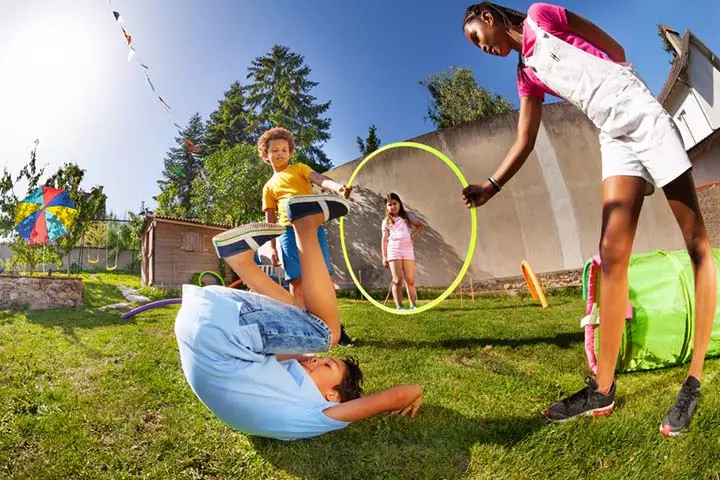
Image: Shutterstock
You Will Need:
- Hula-hoop
- Vault horse
- Mats
- Balance beam
- Music player
How To:
- Divide the gymnasts in 5 teams. Assign the following activities to each team:
- Jump over the folded mat in a hurling position
- Jump on and off a vault horse
- Hopscotch through 10 hula hoops
- Crawl through a series of obstacles
- Jump to the sides of a balance beam
- While the students are performing the skills, you have to play some upbeat music. The kids have to freeze in their position the moment you hit the pause button. Repeat this on and off method often.
- After each freeze, the students have to exchange their places with the gymnast in the left. Continue the game until every student has had a turn at each place.
10. Island tag
Island tag is one of the great gymnastics activities for kids to build strength and agility in the knees, hips and ankles.
You Will Need:
- Panel mats
- Wedge mat
- Balance beam
- Foam mat
How To:
- Spread out the foam mats, panel mat, balance beams and wedge mat on the floor. The equipment will be the island and the floor will be the water.
- Now ask the little gymnasts to jump from island-to-island, playing tag. If they fall in or even touch the water, they will be ousted. The players who are ousted of the game will have to do some sort of conditioning until the round is over.
- We’d suggest you to keep the rounds short to hold the attention of the kids. You should even try to change the ‘it’ often.
11. Wheelbarrow workout
This dynamic activity fosters strength and collaboration in pairs.
You Will Need:
- Nothing
How To:
- Pair up the children. Each pair designates one as ‘partner one’ and the other as ‘partner two.’
- Partner one assumes a pushup position, while partner two stands behind partner one’s feet.
- Partner two lifts partner one’s legs and secures them around their hips.
- Partner one starts walking on their hands while partner two walks forward, holding partner one’s legs.
- Both partners move together until they reach a set point or destination.
Gymnastics for kids is advisable after a child crosses the age of five. However, some academies aim at low-intensity gymnastic workouts for younger kids to facilitate motor skill development. To enhance your child’s interest, you may incorporate fun games and activities that help them learn gymnastics. Moreover, gymnastics offers several health benefits to children, and you may witness them transform into athletic beings after enrolling them in it. Nevertheless, this sport might have specific cons that you should consider before introducing it to your child.
Infographic: Advantages Of Gymnastics In Children
A versatile and dynamic sport, gymnastics offers children various benefits that facilitate good health and overall personality development. So, if you are considering enrolling your child in the sport, this infographic is a worthy read as it lists the advantages of gymnastics in children to help you make an informed decision.

Illustration: Momjunction Design Team
Frequently Asked Questions
1. What age is too late to start gymnastics?
There is no set age limit for beginning training in gymnastics. However, you may consult a healthcare professional before taking classes if you have any health issues.
2. Does gymnastics stunt your growth?
There is contrasting evidence for this association. One study found that performing gymnastics might impact musculoskeletal growth and maturation during puberty. However, there are studies to contradict this. Therefore, more studies are needed to confirm a link between gymnastics and growth (2).
3. Is gymnastics too hard on the body?
Mastering the techniques and postures of gymnastics could be challenging for children. Sometimes, the pressure from parents, coaches and the quest for quick success may lead to health issues in a child (3).
4. What are some safety measures to be adopted in gymnastics for kids?
Safety in gymnastics for kids is essential to prevent injuries and create a positive experience. Ensuring a safe environment starts with trained instructors who understand age-appropriate skills and safety techniques. Facilities should have proper, well-maintained equipment and padded mats to reduce impact. Spotting techniques should be used to support young gymnasts during challenging moves. Warm-ups and stretching help minimize strain, while close supervision and clear instructions maintain discipline and focus. By prioritizing these guidelines, gymnastics can be a safe and enjoyable activity for kids.
Illustration: Gymnastics For Kids: Right Age Benefits Games & Activities

Image: Stable Diffusion/MomJunction Design Team
Gymnastics conditioning exercises are an interesting way for children to stay strong and healthy! Learn some simple gymnastics exercises in this video to stay fit and active.
Personal Experience: Source
MomJunction articles include first-hand experiences to provide you with better insights through real-life narratives. Here are the sources of personal accounts referenced in this article.
i. Toddler gymnastics and soccer.https://earlychildhoodhomeschooling.wordpress.com/2013/04/19/toddler-gymnastics-and-soccer/
References
- Gymnastics; Frequently Asked Questions
https://www.btycgymnastics.org.au/frequently-asked-questions/ - Does Gymnastics Stunt Growth?
https://vic.gymnastics.org.au/VIC/Posts/News_Articles/2018/August/Does_Gymnastics_stunt_growth__.aspx#:~:text=A%20study%20published%20in%202004 - Gymnastics: The Way It Should Be
https://www.public.asu.edu/~jvanasu/vcai/jordan/ - Benefits of Gymnastics; Gymnastics Victoria
https://vic.gymnastics.org.au/content/benefits-of-gymnastics - Safety Tips: Gymnastics.
https://kidshealth.org/en/teens/safety-gymnastics.html
Community Experiences
Join the conversation and become a part of our nurturing community! Share your stories, experiences, and insights to connect with fellow parents.
Read full bio of Dr. Dur Afshar Agha
Read full bio of Harshita Makvana
Read full bio of Swati Patwal
Read full bio of Kavita Kankani






